Goodbye Cool-Season Grass Weeds, Hello Luscious Spring Lawn!
Every homeowner longs for a pristine lawn, one that is enviably lush and green. Sadly, weeds can quickly take over and ruin your lawn in the blink of an eye. This season, stay on top of any cool-season grass weeds rearing their head before they destroy your lawn!
What are Cool-Season Grass Weeds?
Cool-season grass weeds thrive this time of year when temperatures are cool, hence the name. However, the weather isn’t the only condition you need to be worrying about. Think of weeds as an indicator of what’s really going on with your lawn’s health. A few factors like poor soil condition, mowing your grass too short, low-quality lawn seed and unchecked pH levels are the ultimate invitations for grass weeds to emerge. These obnoxious weeds must be taken care of because they compete with your grass for nutrients, light, and moisture. Cool-season grass weeds are typically broadleaf weeds — meaning they’re easy to spot amongst your lawn because they look different from normal grasses. The bad news is, these types of weeds can be tough on your lawn because they’re aggressive and opportunistic and will sprout anywhere possible. But the good news is that most of them need very specific conditions to grow that are (generally) easy fixes. Preventing any type of weed starts with good lawn health. In order to cultivate this, you need to combine proper lawn care practices with the right herbicides to tackle these unwanted plants. First, identify any broadleaf weeds that are currently growing, and refer to the list of common cool-season grass weeds below to better understand the current condition of your lawn!
Cool-Season Grass Weeds
Below is a list of common grass weeds and the conditions they thrive in, so you can properly identify them on your own!
1. Thistle

This prickly weed is infamous for being painful when accidentally stepped on. Its long leaves have sharp barbs that can irritate your skin. Canada thistle prefers to be in moist soil and grows into a tall plant that flowers in the summer. Adding gravel or sand to your lawn’s soil, along with routine aeration can help dry up the area.
2. Carpetweed
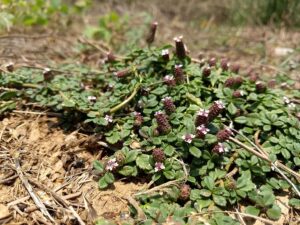
Carpetweed forms as a low-lying mat close to the ground and can spread up to two or three feet. To avoid growth, keep your soil well-watered, as it prefers dry and drought-like soil conditions.
3. Common Chickweed
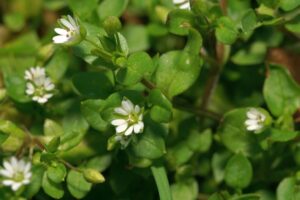
Chickweed is a low spreading weed that thrives in cool and wet weather. If your lawn has too much nitrogen and the soil is compact, you’re almost guaranteed to find this cool-season grass weed. Mowing your lawn too short is also a common cause.
4. Corn Speedwell

Speedwell is a low-growing plant that produces small purple flowers in the spring. This weed will pop up in your yard if your lawn is poorly fertilized, has thinning turf, or compact soil.
5. Crabgrass
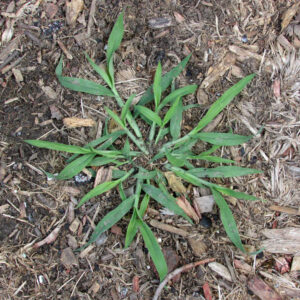
One of the most popular cool-season grass weeds, crabgrass is very common in turfgrass. It generally grows in drought-like soil conditions, so add mulch or peat to your soil for better moisture retention.
6. Dandelion
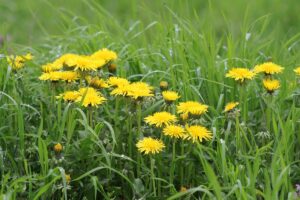
As the most common weed on this list, it’s also the most versatile. Dandelions can grow almost anywhere and will tolerate poor soil as long as there’s at least some sun to grow.
7. Henbit
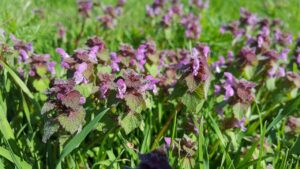
This dark green plant has purple orchid-like flowers come springtime. It will happily take over your lawn if you’re mowing it too short or notproperly fertilizing.
8. Ivy
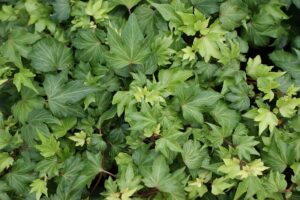
While ivy looks pretty, it’s very invasive and can sometimes cause structural damage. It not only loves the shade but it also thrives in sections of thinned out turf, so keeping a dense lawn is crucial to avoid it!
9. Knotweed
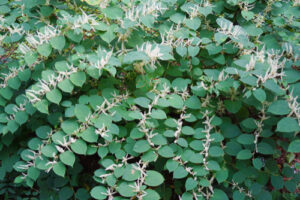
Japanese knotweed can trick you. It looks like a lush bush, but its roots spread quickly and are extremely difficult to remove if left in the ground too long. Knotweed thrives in droughty and compacted soil.
10. Lespedeza

Another common mat-forming weed, this type easily chokes out thin turf. Keep your grass at a longer length than normal and monitor the soil’s pH levels to avoid lespedeza from taking over.
11. Nutsedge
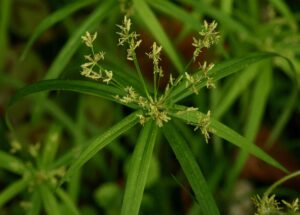
Sedge plants do surprisingly well with poor drainage and thrive in wet soil. However, they can easily grow in almost any environment.
12. Plantain
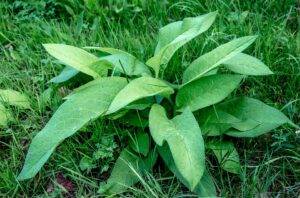
If your lawn isn’t getting enough nitrogen fertilizer or the soil has been compacted, you’ll probably find some plantain weeds mixed in with your grass.
13. Purslane
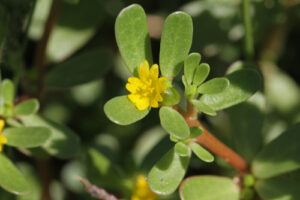
The purslane plant is a type of succulent, and it’s known to grow quickly in dry, sandy soil. Prevent these cool-season grass weeds by creating rich, moisture-retaining soil for your lawn by adding organic matter like mulch or manure.
14. Shepherd’s Purse
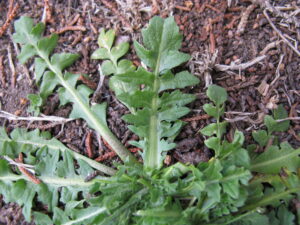
If you’re finding these in your yard, your soil is probably a little too dry and sandy. Shepherd’s purse looks similar to thistles, but without the painful barbs.
15. Sorrel

Sorrel plants thrive in some of the worst soil conditions possible. They can grow in acidic, droughty, and infertile soil conditions.
16. White Clover
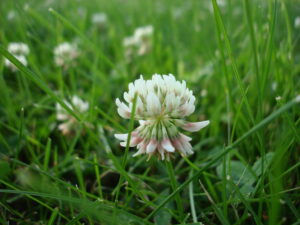
Clover easily grows when there’s not enough nitrogen, or the soil contains a high amount of clay. They also love moist conditions, but keeping your lawn well-fed can keep them at bay.
17. Wild Violet
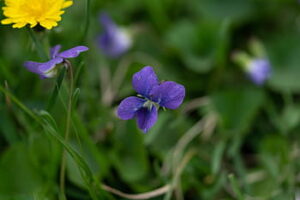
Some homeowners see wild violets as a weed, while others enjoy it as a wildflower. These flowers like moist soil, but can crowd your lawn if it’s thinning.
18. Yarrow
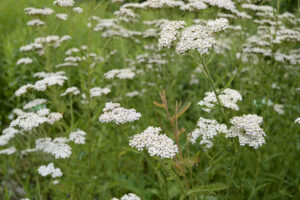
Yarrow is a flowering plant that thrives in droughty and infertile soil. Unfortunately, yarrow can be difficult to remove because it’s so adaptable.
How to Remove Cool-Season Grass Weeds
While most of these weeds can be removed by hand pulling or tweaking your soil’s nutrient levels, they generally need to be treated with some type of pre-emergent and post-emergent herbicides. Related: 7 DIY Organic Weed Control Recipes Maintaining a picture-perfect lawn can be overwhelming, but we can help! From regular fertilization, disease prevention, pH measurement, aeration, and more, we can get your lawn ready for spring. Plus, our professional services don’t end once spring is over! We take care of your lawn throughout every season, so it’s one less thing on your plate!